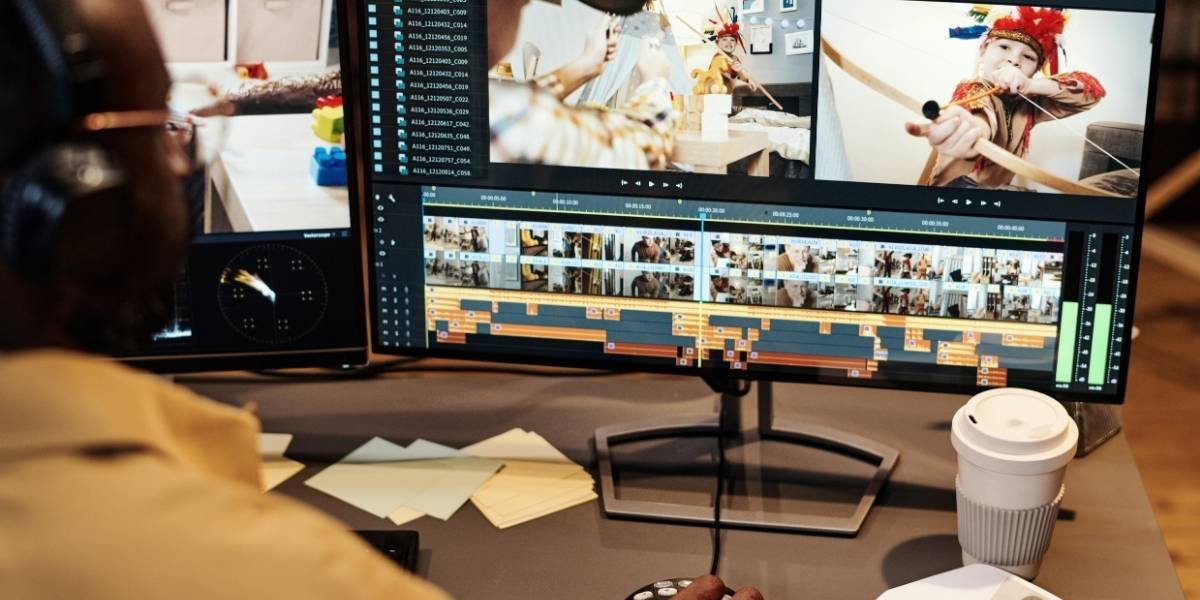In the fast-paced world of digital content, transitions have become essential tools for influencers and creators looking to elevate their video storytelling. Whether you’re crafting a short-form TikTok, a YouTube vlog, or a branded Instagram reel, the right transitions and effects can transform raw footage into a compelling narrative that keeps viewers engaged from start to finish.
Transitions are more than just visual flourishes, they’re storytelling devices. They guide the viewer’s eye, signal shifts in tone or time, and create rhythm within the edit. When used strategically, transitions can enhance clarity, build emotion, and reinforce brand identity.
Why Transitions Matter in Video Storytelling
Transitions help structure your content. They allow creators to move between scenes, ideas, or emotions without losing momentum. A well-placed fade, whip pan, or match cut can make your video feel polished and intentional, even if it was shot on a smartphone.
For influencers, transitions also serve as a signature style. Creators like Zach King and Kelli Erdmann (aka HappyKelli) have built massive followings by mastering seamless transitions that blend creativity with technical precision. Their videos often feel like magic tricks, proof that transitions can be both functional and entertaining.
Beyond aesthetics, transitions help maintain viewer attention. In a landscape where scroll fatigue is real, dynamic editing keeps audiences watching longer. This is especially important for marketers and creators focused on retention and engagement. For more on this, see how marketers can create engaging video content using storytelling techniques.
Types of Transitions and When to Use Them
There are countless types of transitions, each with its own purpose. Here are a few commonly used styles and how they contribute to flawless video storytelling:
- Cut: The most basic transition, a direct jump from one clip to another. Best used when continuity is strong and no visual cue is needed.
- Fade In/Out: Often used to signal the beginning or end of a scene. Adds emotional weight or closure.
- Cross Dissolve: Smoothly blends two clips together. Ideal for time lapses or mood shifts.
- Whip Pan: A fast camera movement that transitions between scenes. Great for action or comedic timing.
- Match Cut: Aligns similar shapes or movements between clips. Creates visual continuity and surprise.
- Zoom Transition: Moves the viewer into or out of a scene. Adds depth and energy.
Each transition should serve the story. Overusing effects can distract from the message, while thoughtful placement enhances flow. For creators looking to refine their editing, this guide on adding transitions for seamless flow offers practical tips.
Effects That Complement Transitions
Effects work hand-in-hand with transitions to elevate storytelling. Color grading, motion blur, and sound design can amplify the impact of a transition and reinforce the mood of a scene.
- Speed Ramping: Adjusts the playback speed to emphasize movement or emotion. Often paired with whip pans or zooms.
- Light Leaks: Adds a dreamy or nostalgic feel. Works well with cross dissolves or fades.
- Sound Bridges: Audio that carries over a transition. Helps maintain continuity and emotional tone.
- Text Animation: Introduces context or commentary. Can be timed with transitions for emphasis.
Creators like Marques Brownlee and Jenn Im use effects subtly to enhance their transitions without overwhelming the viewer. Their videos feel cinematic yet approachable, a balance that resonates with audiences across platforms.
Platform-Specific Transition Strategies
Different platforms favor different styles of transitions. On TikTok, quick cuts and match moves dominate, often synced to music or trends. Instagram reels lean into aesthetic transitions like zooms and fades, while YouTube allows for more narrative-driven editing.
Understanding platform norms helps tailor your transitions for maximum impact. For example:
- TikTok: Use jump cuts, outfit changes, and hand swipe transitions to match trending formats.
- Instagram: Focus on visual polish, smooth zooms, color overlays, and aesthetic fades.
- YouTube: Prioritize storytelling, use fades, dissolves, and sound bridges to guide longer narratives.
Tools like CapCut, Final Cut Pro, and Adobe Premiere offer presets and templates that simplify the process. Many influencers also use mobile apps like InShot or VN Editor to create transitions on the go.
Common Mistakes to Avoid
While transitions can elevate your video, misusing them can have the opposite effect. Here are a few pitfalls to watch out for:
- Overuse: Too many transitions can feel chaotic or gimmicky. Use them sparingly and with purpose.
- Inconsistency: Mixing styles without intention can confuse viewers. Stick to a cohesive visual language.
- Poor Timing: Transitions that don’t align with music or movement can feel jarring. Sync carefully.
- Lack of Story: Transitions should support the narrative, not replace it. Always prioritize clarity.
Reviewing your edit with fresh eyes, or asking for feedback, can help catch these issues before publishing.
Building Your Signature Transition Style

Influencer branding often includes a recognizable editing style. Developing a signature approach to transitions can help differentiate your content and build audience loyalty.
Start by experimenting with different techniques. Try match cuts, whip pans, or zooms in various contexts. Pay attention to what resonates with your audience, comments, shares, and watch time can reveal which transitions enhance your storytelling.
Consistency is key. Using similar transitions across videos creates familiarity and reinforces your brand identity. It also makes your content more memorable, which is essential in a crowded digital space.
The Future of Transitions in Storytelling
As video platforms evolve, so will the tools and techniques for transitions. Augmented reality, AI-assisted editing, and interactive formats will introduce new possibilities for seamless storytelling.
Creators who stay curious and adaptable will thrive. Learning new software, studying trends, and collaborating with other editors can keep your transition game sharp. Whether you’re a seasoned influencer or just starting out, mastering transitions is a powerful way to elevate your content and connect with viewers.
In the end, transitions are more than technical flourishes, they’re emotional cues, narrative bridges, and creative signatures. When used with intention, they transform simple clips into unforgettable stories.







